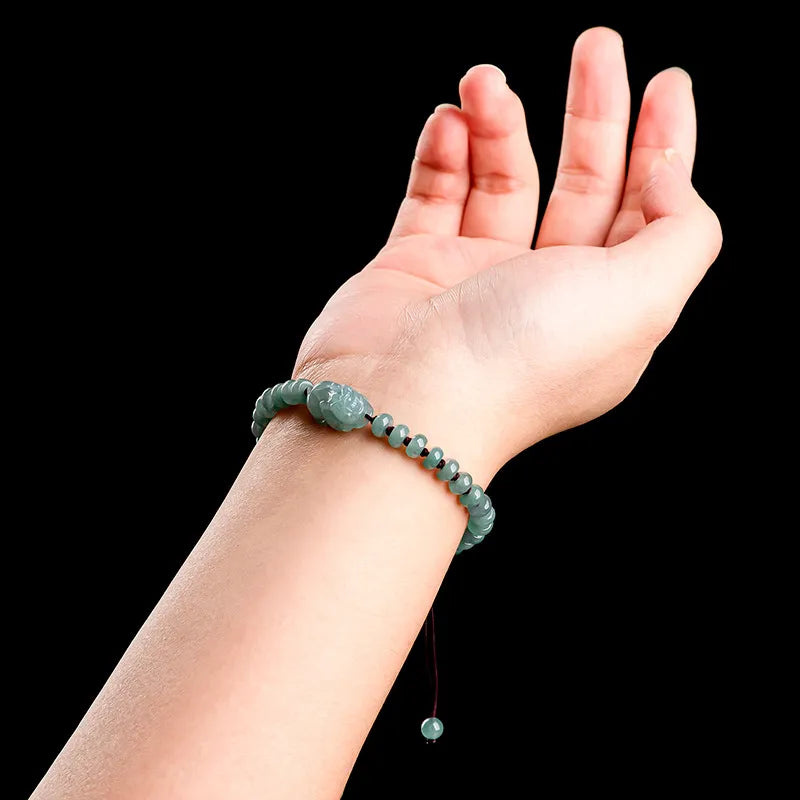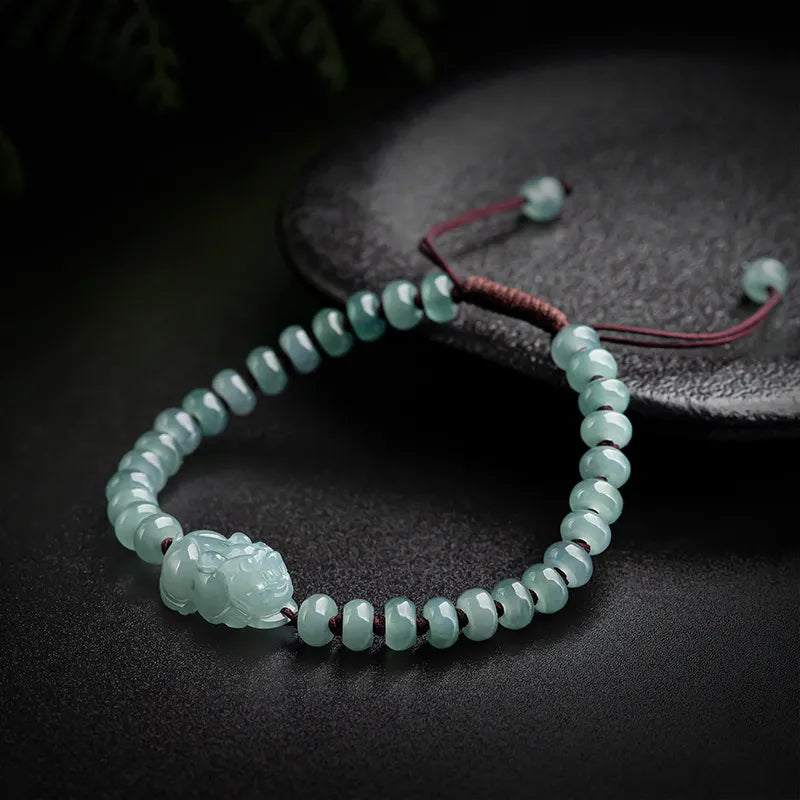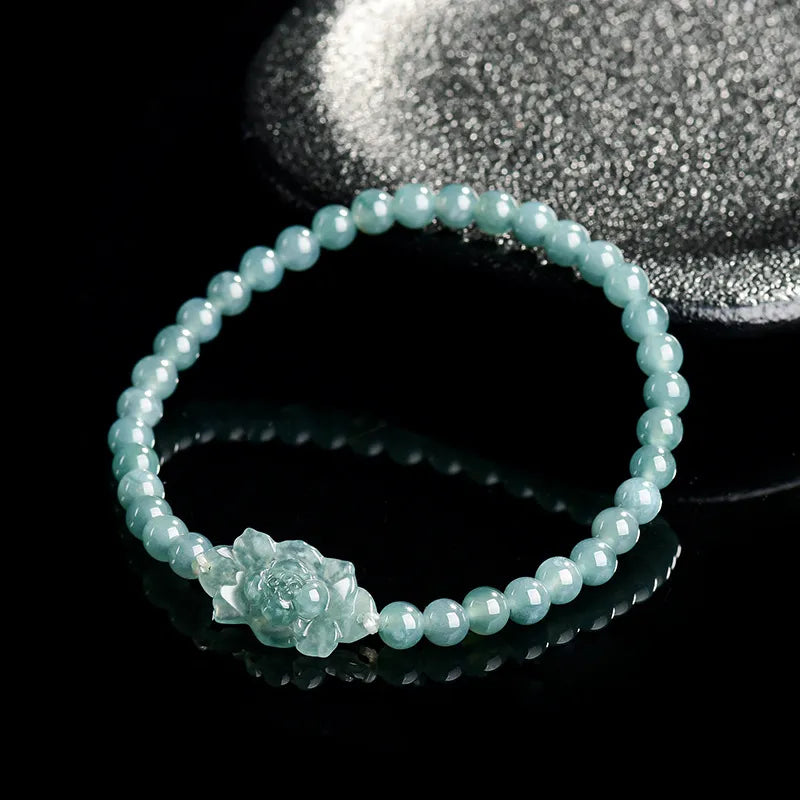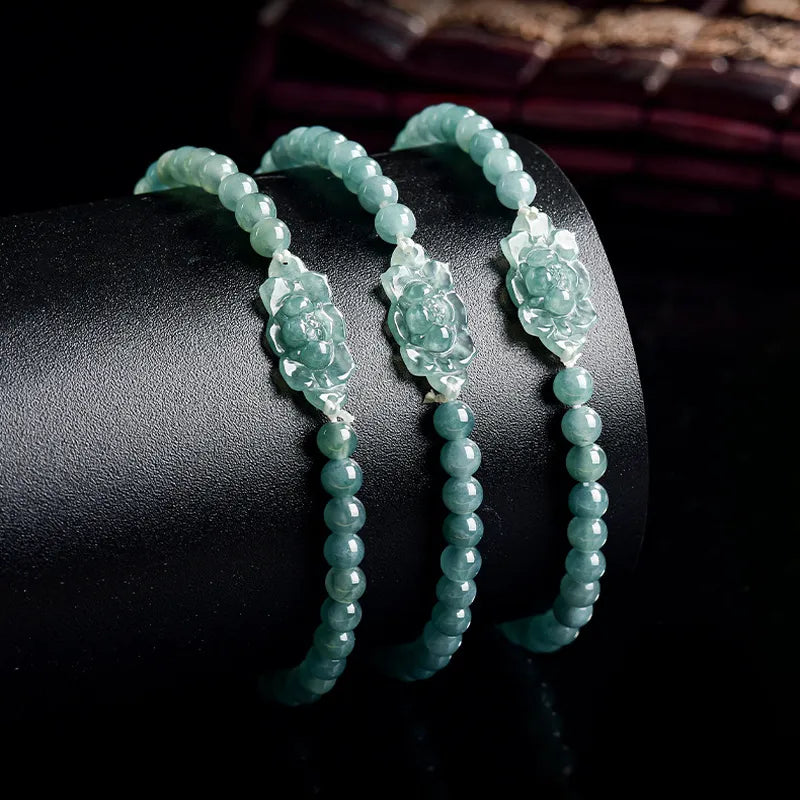How to Assess Jade Bangle Quality Under Natural Light: A Detailed Guide
Natural light provides the most reliable environment for evaluating a jade bangle’s true appearance, as it reveals subtle details that artificial lighting may obscure. The interplay of sunlight with jade’s texture, color, and translucency offers critical insights into its authenticity and craftsmanship. Below, we explore techniques to analyze jade quality under daylight, focusing on timing, angles, and environmental factors.
Timing Matters: Choosing the Right Time of Day
The quality of natural light varies throughout the day, influencing how jade appears.
- Morning Light (Sunrise to 10 AM): Soft, golden-hour sunlight enhances warmth in jade’s color, particularly for varieties with yellow or reddish undertones. This light minimizes harsh reflections, making it easier to spot inclusions or surface irregularities.
- Midday Light (11 AM to 2 PM): Direct, intense sunlight can create strong glare, especially on highly polished bangles. While this lighting highlights translucency, it may obscure subtle color variations. Tilt the bangle to reduce glare and observe internal structures.
- Afternoon Light (3 PM to Sunset): Warm, angled sunlight accentuates texture and depth, revealing the bangle’s three-dimensional qualities. Green jade, for example, may display a gradient from light to dark hues under late-afternoon rays.
Pro Tip: Overcast days provide diffused, even lighting that eliminates shadows, making it ideal for detecting color inconsistencies or artificial treatments.
Observing Color Depth and Consistency
Natural light exposes the true hue and distribution of color in jade.
- Surface vs. Body Color: Rotate the bangle to compare its surface reflection with its internal color. Authentic jade often has a slightly darker “body color” visible through the edges or when backlit. Uniform surface color may indicate dyeing or artificial enhancement.
- Color Zoning: Look for natural color transitions, such as darker patches near the bangle’s inner curve (where it rested against skin or soil over time). Abrupt color shifts or perfect symmetry are red flags for synthetic materials.
- Undertones: Hold the bangle against a white background to identify underlying hues. For instance, high-quality green jade may reveal subtle blue or yellow undertones, while inferior stones often appear flat or monochromatic.
Testing Method: Gently tilt the bangle to observe how light interacts with its color. Natural jade will display a gradual “bloom” of color, whereas treated stones may reflect light uniformly without depth.
Analyzing Translucency and Internal Structures
Daylight reveals the bangle’s transparency and internal characteristics.
- Light Diffusion: Hold the bangle against a light source (e.g., a window). High-quality jade will allow light to pass through evenly, creating a soft glow. Cloudy or opaque areas suggest impurities or poor material.
- Inclusions and Fibers: Examine the bangle for natural inclusions, such as fine, wispy “fibers” (characteristic of nephrite) or small mineral deposits. These features indicate authenticity, while overly clean stones may be synthetic or heavily treated.
- Water Lines: Some jade varieties exhibit layered translucency, known as “water lines.” These appear as horizontal bands of varying clarity under natural light, adding to the stone’s uniqueness.
Expert Insight: A common misconception is that translucent jade is always superior. In reality, opacity can indicate natural aging or a specific jade variety (e.g., “mutton fat” jadeite), which is valued for its creamy texture.
Surface Texture and Polish Evaluation
Natural light highlights the craftsmanship of the bangle’s finish.
- Polishing Marks: Look for microscopic “microwaves” (fine ridges from polishing) under natural light. A well-polished bangle will have a smooth, consistent texture, while poor craftsmanship leaves visible scratches or uneven surfaces.
- Edge Sharpness: Inspect the transition between the bangle’s body and its inner/outer rims. High-quality polishing creates seamless curves, whereas rough or angular edges suggest rushed production.
- Luster: Authentic jade develops a subtle, waxy luster under natural light. Overly glossy finishes may result from artificial coatings, which can wear off over time.
Maintenance Tip: Avoid exposing jade to prolonged direct sunlight, as UV rays may gradually fade its color. Store bangles in a cool, dark place when not in use.
Environmental Factors Affecting Observation
Surrounding conditions influence how jade appears outdoors.
- Background Contrast: Place the bangle on a neutral background (e.g., white paper or fabric) to eliminate color reflections from nearby objects. Colored surfaces (e.g., grass or clothing) can alter the stone’s perceived hue.
- Wind and Dust: Outdoor settings may introduce dust or debris that obscures details. Clean the bangle gently with a soft cloth before evaluation to ensure accuracy.
- Temperature: Extreme heat or cold can affect jade’s appearance temporarily. For example, cold weather may make the stone appear slightly darker, while warmth can enhance its translucency.
Cultural Context: In traditional markets, sellers often use “jade boards” (white panels) to display bangles under natural light, ensuring buyers see the stone’s true color without distractions.
Advanced Techniques for Discerning Buyers
For deeper verification, these methods require minimal tools.
- Breath Test: Exhale gently onto the bangle’s surface. A natural jade stone will fog up slightly but clear quickly due to its porous structure. Synthetic materials may retain fog longer or show condensation patterns.
- Sound Resonance: Tap the bangle lightly with a wooden stick. Authentic jade produces a clear, ringing sound, while composites or filled stones may sound dull or flat.
- Color Stability: Move the bangle between shaded and sunny areas. Natural jade maintains its color integrity, whereas dyed or treated stones may appear lighter or darker in different lighting.
Scientific Perspective: Jade’s refractive index (a measure of light bending) varies slightly between authentic and synthetic materials. While impossible to measure without tools, subtle differences in light behavior under natural light can hint at authenticity.
Final Considerations
Evaluating jade under natural light demands patience and attention to detail. Prioritize stones that display natural color variations, internal textures, and balanced translucency. Avoid bangles with uniformly perfect appearances, as these often mask artificial treatments. Trust the interplay of light and stone to reveal the bangle’s true character.




